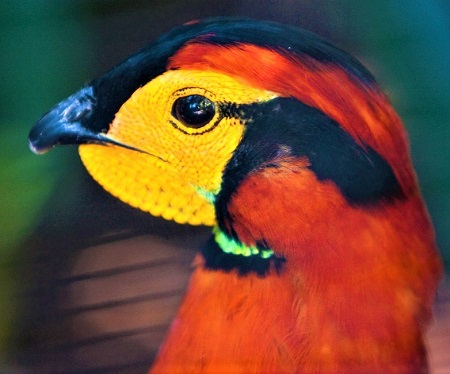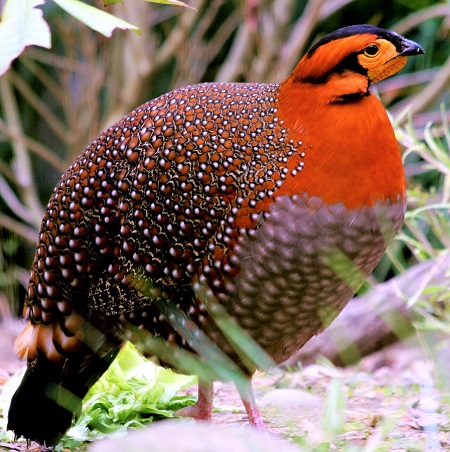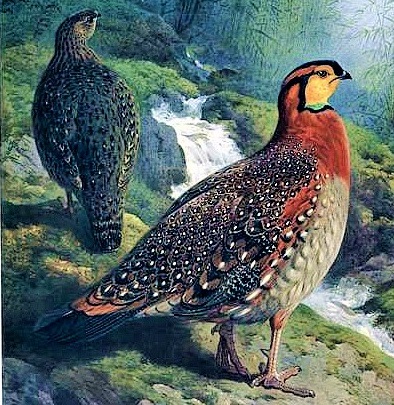Blyth’s Tragopan
The Blyth’s Tragopan, also known as the Grey-Bellied Tragopan, is a bird from a Pheasant family known as the Tragopans or the Horny Pheasants. Its common name commemorates the English zoologist and curator of the Museum of the Asiatic Society of Bengal, Edward Blyth (1810 – 1873). The Blyth’s Tragopan is the largest of all Tragopans and it has two subspecies that are found in India, Myanmar, south-east Tibet and south-central China.
The male Blyth’s Tragopan is easily recognized by his bright yellow bare facial skin, and rusty-red head, neck and breast. He has also smoky-grey lower breast and belly, and a brownish-red body densely spotted with small white dots. The male Blyth’s Tragopan possesses a distinctive black band extends from the base of the bill to the crown and another black band extends behind the eyes. Like all Tragopans, males have two pale-blue fleshy ‘horns’ that become erect during courtship display. And a brilliantly colored, inflatable lappet that hangs from the throat. The lappet of the male Blyth’s Tragopan is yellow bordered with blue, and like the horns, can be expanded and exposed during courtship display. Female Blyth’s Tragopans are less ornate with a dark brown plumage with a mixture of black, buff and white mottling.
The Blyth’s Tragopan breeds from March or early April through to May. Clutch size is between two and six eggs, which are thought to be incubated for approximately 28 to 30 days. The female Blyth’s Tragopan does the incubation and the male has been observed bringing food to the incubating female in the nest.
| Place of origin | India, Myanmar and China |
| Use | Ornamental and preservation |
| Weight | Male: mean 1930 g female: 1000 – 1500 g |
| Egg color | Buff and heavily dotted with dark buff |



